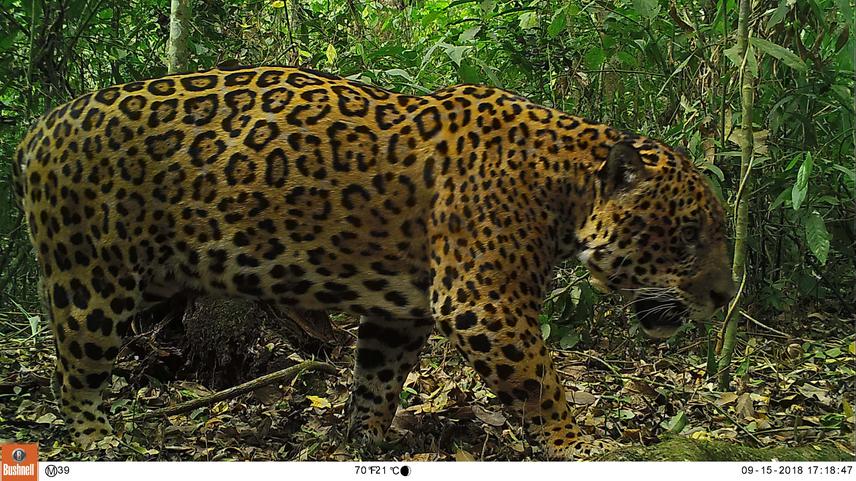Sofia Bardavid
Habitat destruction, overexploitation and other human disturbances are the biggest threat to bird and mammal species. Assessing the anthropic impacts on natural communities through the human footprint index will help identify priority areas, prioritize conservation actions and mitigate the negative effects of human activities. Generating information about what the effects are like is particularly important in forest matrices where human economic activities are developed in order to be able to propose and achieve the sustainable use of natural resources and the conservation of biodiversity.
The objective of this work is to determine the importance of forest and landscape areas with different anthropic impacts for bird and mammal species associated with mature forests. To know which species are most sensitive to these impacts to plan conservation strategies.

Photographic capture of a yagurete (Panthera onca) in the Baritú National Park, Salta, Argentina.
The transformation and degradation of forests affects mainly bird and mammal species associated with mature forests. The Southern Yungas are mountain forests of the Argentine Northwest and South of Bolivia considered a biodiversity hotspot on a global scale that is under increasing anthropic threat. It is estimated that approximately 75% of the original surface of the Piedmont forests of the Southern Yungas of Argentina has been transformed to other land uses. The remnants of Piedmont forests are subject to intensive selective logging use without criteria that ensure their economic and ecological value. The National Law 26331 establishes the guidelines for the sustainable use of the 35 million hectares of native forests in Argentina. The objective of this work is to determine the importance of forest and landscape areas with different anthropic impacts for bird and mammal species associated with mature forests. To know which species are most sensitive to these impacts to plan conservation strategies. The information generated from this project will be essential to determine the areas that are important for the conservation of mammal and bird species and should be reserved for protection or under sustainable management schemes. This information will allow obtaining a map with priority conservation areas for threatened bird and mammal species of the southern Yungas of Argentina. This map will serve to improve provincial territorial planning, strengthen and expand the system of public and private protected areas and propose a long-term monitoring scheme.
The study area will be limited to the Southern Yungas of the Provinces of Salta and Jujuy that covers 2,500,000 ha, which will be superimposed on a grid of hexagonal cells of 260 ha. At least 50 cells will be selected at random where local human activities will be sampled and the presence and abundance of endangered and endemic species of birds and mammals will be determined. To assess human activities at the local scale in each selected cell, the frequency of detection of livestock in each of the camera traps will be determined. The intensity of hunting and logging will be determined by the number of records of each activity (i.e., traps, firearm cartridges, camps, animal carcasses, stumps, etc.) in each cell. In addition, the length of logging or petroleum roads will be quantified by georeferencing them within each cell. To register species of mammals and birds, camera traps and automatic sound recorders will be placed in the field.